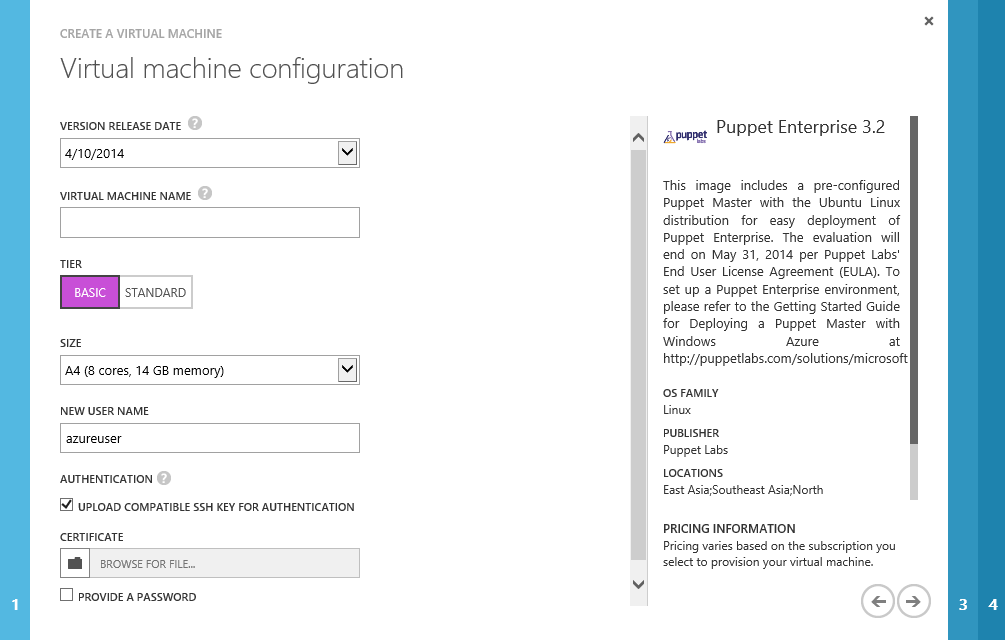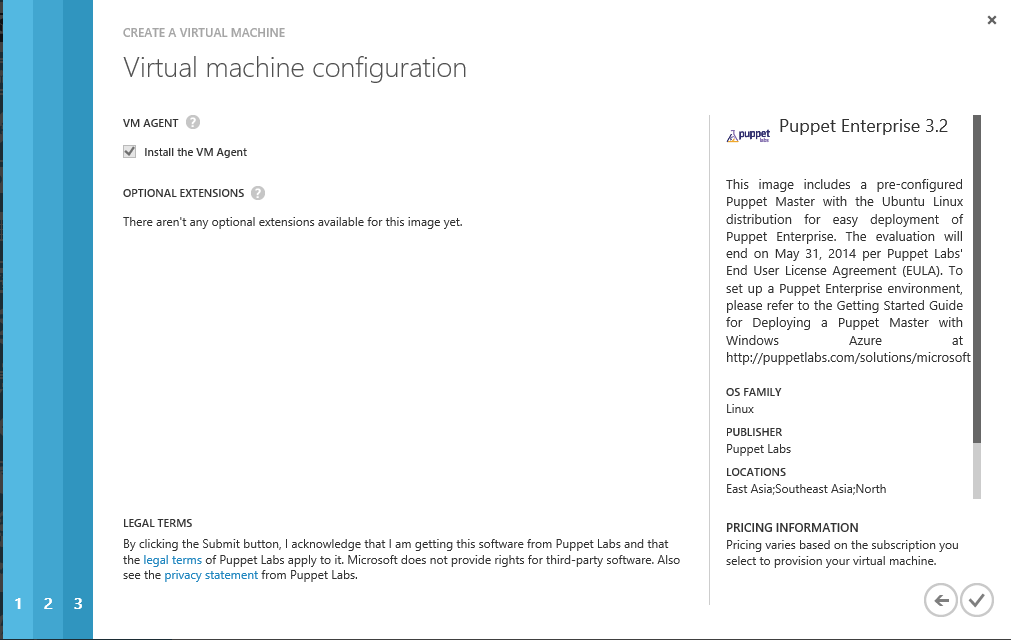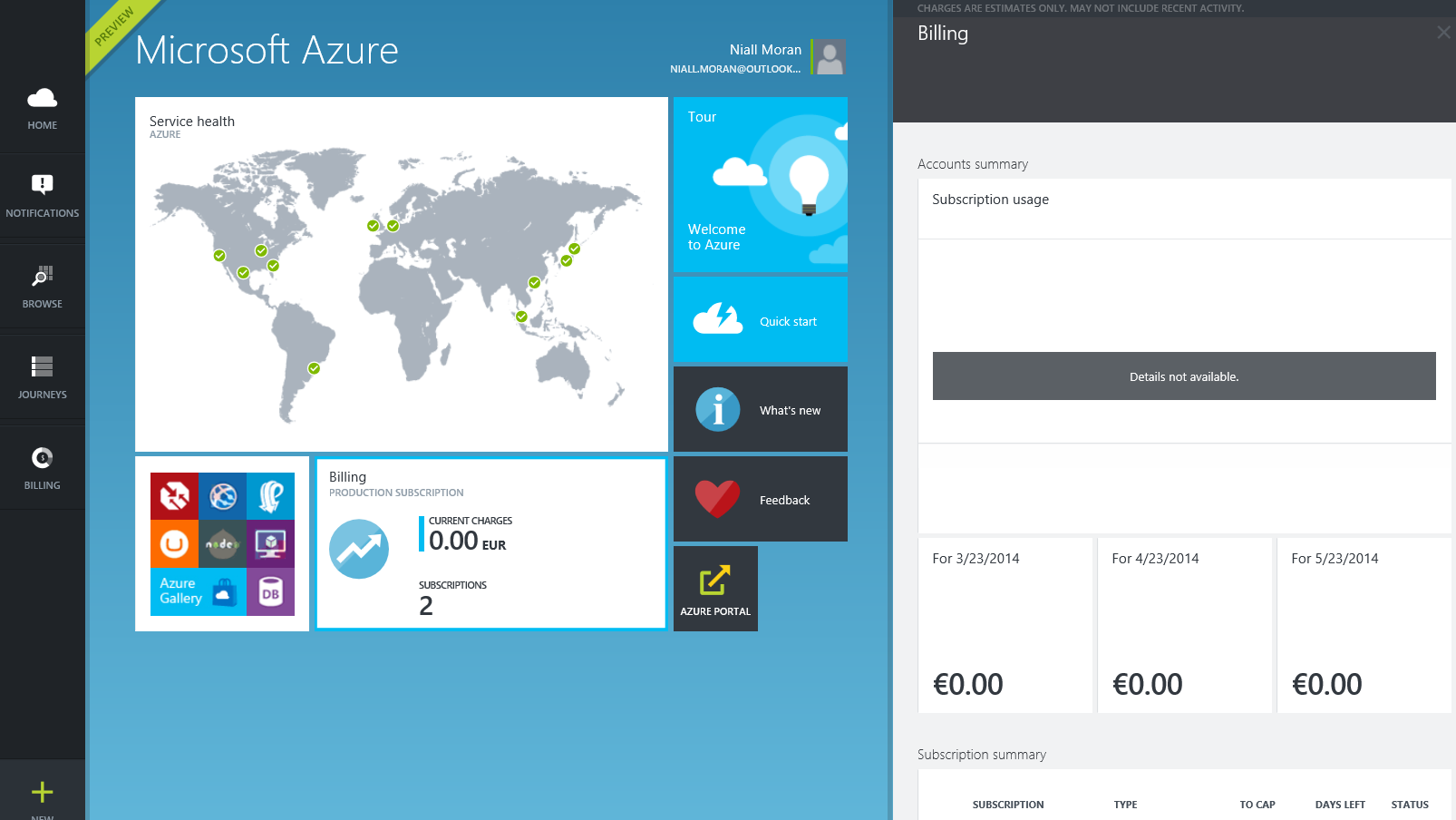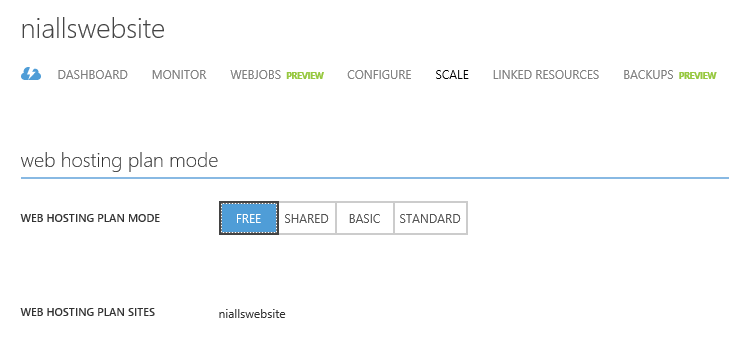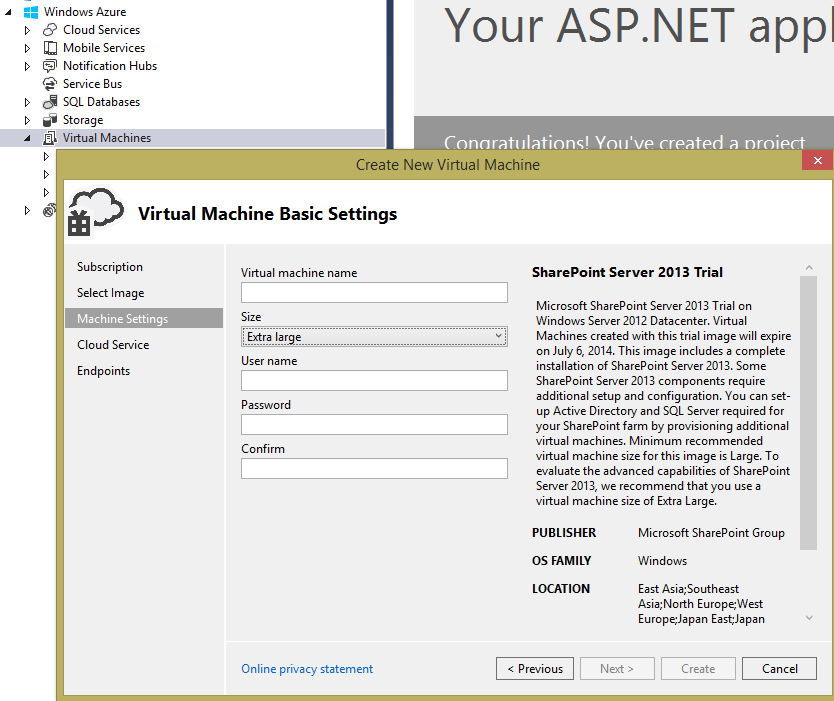Microsoft Azure Updates
It's been a really busy few weeks in Microsoft. We have a new CEO, we have launched Office on iPad and we have just come through Build 2014 where we announced all of our new innovations for developers, including our open source initiatives for .NET, Azure and of course Windows Phone/8.1 and our new universal apps strategy which blurs the lines between devices.
From an Azure perspective we have an incredibly exciting year ahead. Azure has evolved into a leader in both the Platform and Infrastructure cloud space and we are 100% committed to evolving further and truly allowing our customers to run any workload on Azure. I think a fantastic testament to this is the fact that EA's Titanfall went live on 100,000 VMs within Azure at the same time NBC was streaming the winter Olympics at 5 Terrabits per second through Azure Media Services.
Here is a quick overview of some of the most recent updates to the Azure Platform:
Virtual Machines
Basic VMs
The big change for VMs has been the introduction of a new Basic VM. VMs as we understand them are called Standard and the new basic VM reduces the cost of running a VM by up to 27%. The basic VM has no support for auto-scaling or load balancing and is meant for single VM scenarios. You can add basic VMs to availability sets if you want to maintain high availability but you must then create your own load balancing and autoscaling mechanism. This is a really interesting idea, as a lot of customers do implement their own load balancing mechanisms. For example a Game that uses Azure as the backend may connect to a single VM and "stick" to that VM for the entire game play. In this scenario our auto scaling and load balancing is of no use, so the fact that the user doesn't require them allows us to pass on the cost saving.
VM Agent
When you create a VM in Azure you have the option to install a new agent. The VM Agent is used to install and manage extensions that help you interact with the virtual machine. For example, when you can't access the guest OS because of a forgotten password, an extension can retrieve the password.
On Virtual Machines, the VM agent remains quiet and passive when not in use, but when you initiate it, it dramatically increases the power of the Virtual Machine by creating a secure and trusted springboard for other technologies, called extensions. These extensions, like PowerShell, Puppet, Visual Studio and Chef, aren’t stagnant in a machine image. They offer additive value by being inserted into a running VM and can be updated over the lifecycle of the VM. Even with some of the simplest capabilities, like being able to reset your username/password via PowerShell. I find this new functionality really exciting because it brings some of the power and ease of management of PaaS to IaaS. The new Chef and Puppet extensions are a great example of how VMs on Azure can become part of your DevOps processes.
In fact, we have created an entire blog for this area, why not check it out:
https://blogs.msdn.com/b/windowsazure/archive/2014/04/10/blogging-on-virtual-machines.aspx
Azure Automation
Anytime I speak to customers about Azure I always mention PowerShell. Its is an absolute key part of how companies adopt and manage their resources within Azure and I always insist that customers start there. In fact, there are functions that can be used within PowerShell that haven't yet made it to the dashboard. A good example of that is the ability to create VMs within a Vnet and allocate static IP addresses that withstand shutdowns and restarts. See my blog post https://blogs.msdn.com/b/niallsblog/archive/2014/02/23/allocating-static-ip-addresses-within-a-vnet.aspx.
So, the new Automation capabilities bring this to the new level by allowing you to automate the processes for your infrastructure and application lifecycle by enabling integration, orchestration, and automation of tasks using Runbooks built on Windows PowerShell Workflow. With Automation, you can author Windows PowerShell Runbooks that integrate into other Windows Azure services, as well as external systems you use to deliver your end to end tasks that simplify cloud management.
The service is currently in preview and available in East US at no cost.
You can get loads more info and sign up for the preview here:
https://azure.microsoft.com/en-us/documentation/services/automation/
Zone Redundant Storage (Coming soon)
Coming soon, a new redundancy level for Block Blob storage, called Zone Redundant Storage (ZRS) will be made available. Today, customers can use Geo Redundant Storage (GRS) to keep their data durable in two regions at least hundreds of miles apart from each other, where Azure stores an equivalent of 6 copies of the data (3 in each region). With the introduction of ZRS, Microsoft provides a new redundancy option that keeps customer data durable by storing an equivalent of 3 copies of data across multiple facilities. These facilities may be within the same region or across two regions. ZRS will be priced 37.5% lower than GRS when it becomes available.
New Portal Dashboard
The new portal is an example of how Azure has matured over the last few years from a platform to run Windows workloads to a leader in the IaaS and PaaS space. With all of the new features that have been added it has been very difficult to incorporate everything within the portal (remember the first Silverlight portal?). So the new portal makes best use of a new modern type interface and in fact is a show case for how web applications can be best represented using this new modern approach. Be aware it is preview and very early so some things are missing, but you can access both portals.
You can check it out and all other preview features here:
https://azure.microsoft.com/en-us/services/preview/
Dev/Ops
For customers that use tools like Chef and Puppet we have announced partnerships with Puppet Labs and Chef, embracing existing technologies, communities, and ecosystems and extending our own portfolio of DevOps technologies to continue improving the developer experience across different Microsoft platforms. Using these technologies, customers will now be able to more easily deploy and configure in the cloud using community-driven solutions.
ExpressRoute in Europe
Last year we started our roll out of ExpressRoute, our MPLS dedicated connection to Azure data centres. This is a massive area for governments and financial institutes that need better performance or are sensitive about security implications of internet based VPNs. This week we announced the roll out of this service within Europe via a new partnership with BT.
To be honest, apart from a couple, I don't see too many customers requesting this locally but it was one area that was considered a gap with AWS so I am delighted we have filled it.
You can see the BT announcement here:
https://letstalk.globalservices.bt.com/en/2014/04/better-cloud-through-microsoft-azure/
and the Microsoft announcement here:
https://www.microsoft.com/eu/transforming-business/Azurecloudservices_power_confidence_Choice.aspx
Websites
Websites is a really great example of how Microsoft are innovating with platform services. With websites customers can deploy sites with or without their favourite content management system within seconds, add autoscaling rules or scale manually and really reap all of the benefits of the cloud. It's a perfect solution for non-developers and developers alike and truly brings an enterprise scale web platform to everyone. I recently wrote a blog post on how websites can help startups survive Dragon's Den (Shark Tank in US), you can see that here: https://blogs.msdn.com/b/niallsblog/archive/2014/03/31/help-your-website-survive-dragon-s-den.aspx
Basic Mode
We have added a new Basic mode to websites. This is part of the dedicated website hosting package which means you can define the size of your VM and have up to 3, but offers savings over standard as you don't have auto-scaling features. We have also updated standard to include the use of five SNI and one IP SSL certificates with 50 GB of storage. Plus, Standard tier customers will now receive all the new advanced capabilities, including live debugging, Backup, and site slots. Standard tier instances support up to 500 websites; scale up to 10 VM instances; and offer AutoScale, which dynamically adds or removes VM instances based on actual customer traffic.
These new features give customers more great options when it comes to hosting websites.
You can get more information here:
https://azure.microsoft.com/en-us/documentation/services/web-sites/
Backup for Websites
If you think about one of the major benefits of websites, it's the ability to create a website, api or application quickly and easily and not to have to think about infrastructure at all. This takes away the pain of building the infrastructure, managing it, patching it, securing it and keeps the total cost of ownership right down. Another cost to businesses is backup and disaster recovery and we have now taken that away for websites. You can now schedule website backups and backup your files to a storage account (which can then have Zone or Geo redundancy turned on for extra resilience). The backup process will not only backup your website files but also any databases you have attached including SQL Database and MySQL.
Hosting Plans
In addition, we have also introduced a new way of managing your resources using Web Hosting Plans, part of which is the concept of a Pricing Tier ( analogous to what you probably know as Web Site Mode). A Pricing Tier is an attribute of your Web Hosting Plan, and as such, determines the resources and features available to the sites contained in a the Plan. This is how it looks in the existing Azure portal and the Azure Portal Preview:
Visual Studio
Visual Studio is a massive part of our developer ecosystem and I won't even begin to try and detail all of the announcements during build around .NET, .NET native and universal apps. Check out the build site for that:
https://www.microsoft.com/en-us/news/events/build/
But when it comes to integration between developers and the operational aspects of running applications Visual Studio is regarded as a top leader in the industry. It's deep integration with Azure allows developers to manage operational components within an environment they are used to. Couple this with Visual Studio Online and the ability to code, build, test and deploy within the cloud, developers can now have complete control over the management of the lifecycle of their applications.
At build we announced a new update to Visual Studio and Azure SDK which adds more functionality to the developer including:
- The ability to create websites and VMs within Visual Studio and then generate PowerShell deployment scripts.
- A new JSON editor with IntelliSense
- .NET support for Mobile Services with remote debugging support.
- The ability to send test notifications within Visual Studio
You can get a deep dive from Scott Guthrie here:
SQL Database
Active Geo-Replication
Gain control over your disaster recovery process by creating up to 4 active, readable, secondaries in any Azure region and you can choose when to failover.
Restore service:
Restore your database to any point in time within the last 35 days in the case of a human or programmatic data deletion scenario (“oops delete”). The restore feature can help replace import/export workarounds with self-service control over database restore – this can save customers time and money.
Higher uptime SLA at GA:
With the transactional database as the most critical portion of your app, we are excited to announce that we will increase the SLA at GA on your Premium database to 99.95%
Additional Premium option :
Meet high-end throughput needs with a new, higher P3 performance level which delivers the greatest performance for your most demanding database workloads.
Larger database size:
Increasing Premium from 150GB to 500GB
General Availability of a Number of Services
As well as all of these new features a number of features have come out of preview and are now generally available like auto scale, azure ad premium, backup, Hyper-V recovery manager, cdn 2.0, scheduler, VPN dynamic routing and point to site VPN as well as visual studio online.
So, it's been a busy few weeks for the Azure and VS/.NET team and it's not getting any easier as they will be working hard for the next release, which I can't wait for!
If you want updates or rants as they come please follow me on the tweet machine @niallermoran
